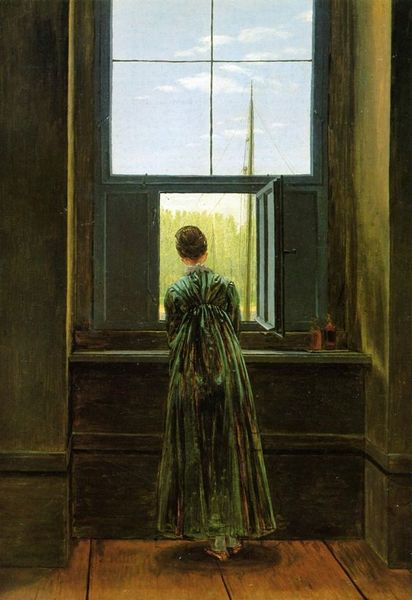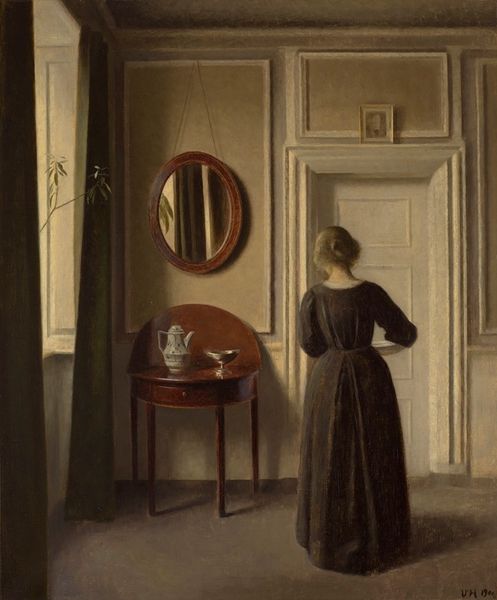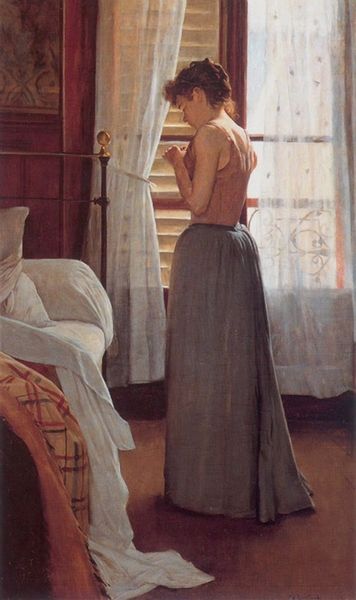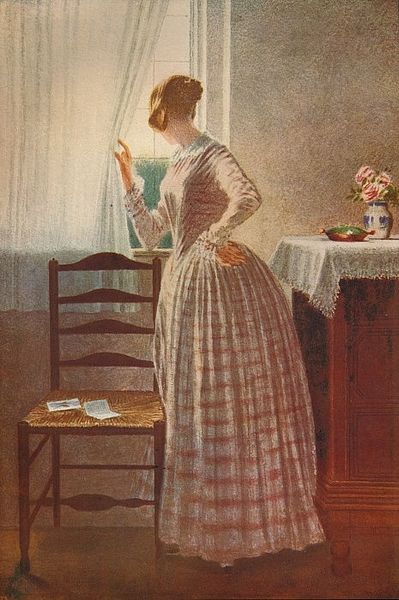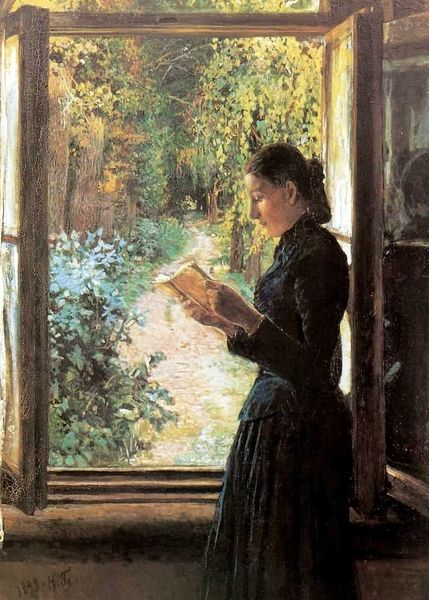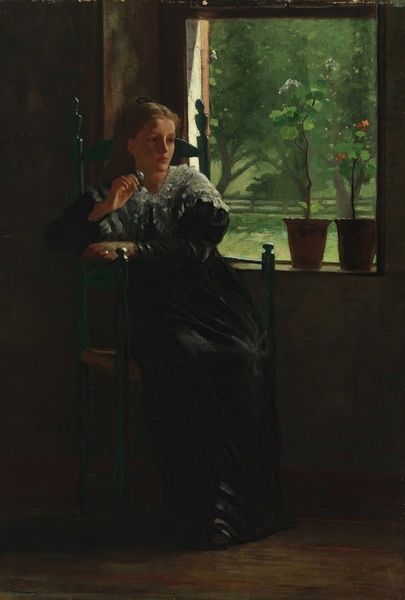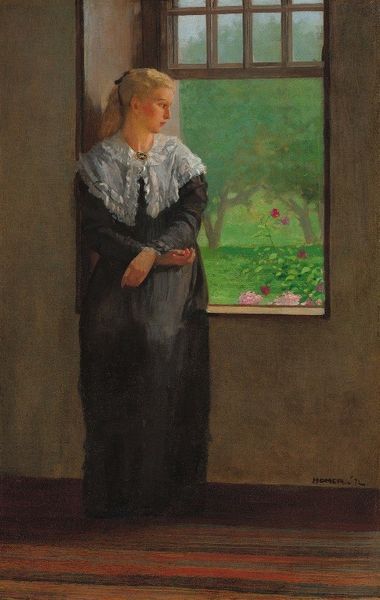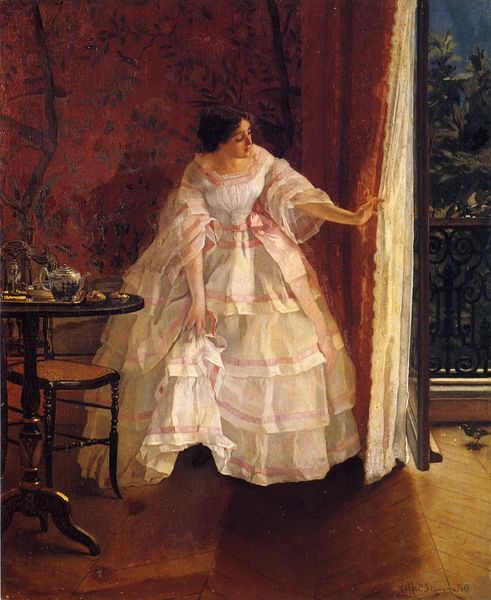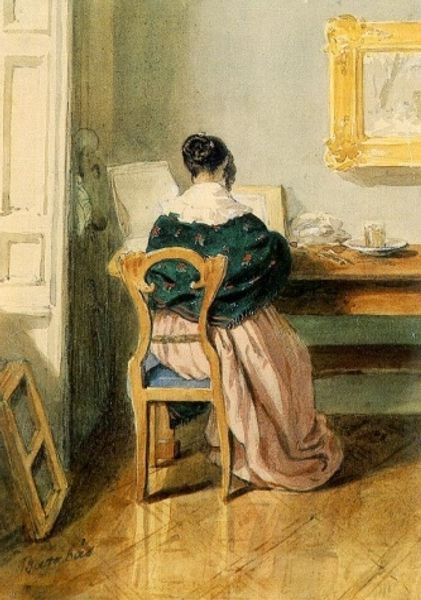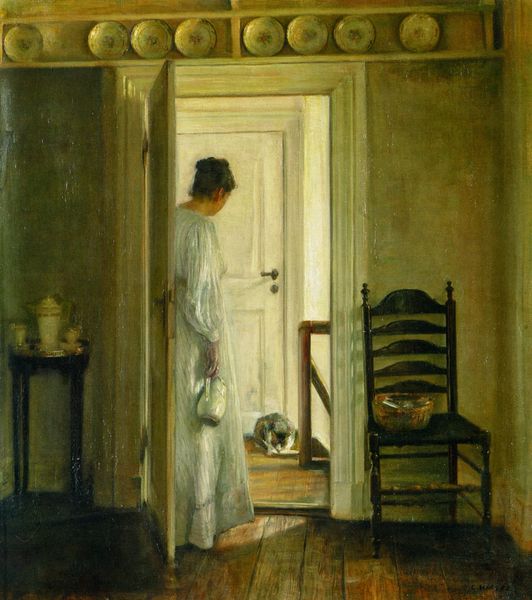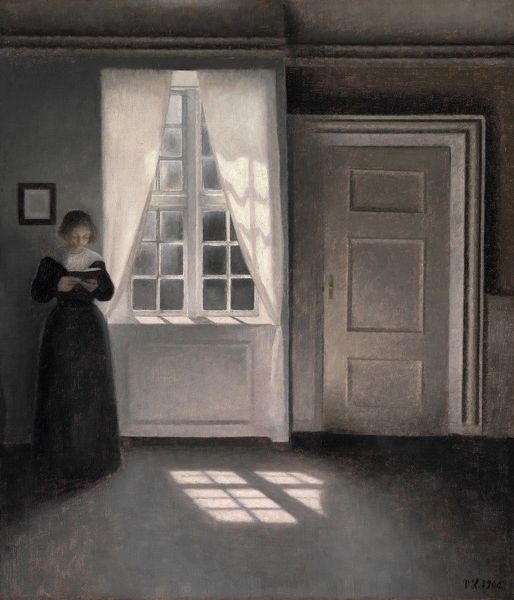
Copyright: Public domain
Editor: Here we have Silvestro Lega's "The Curious Woman," created in 1866. The subject, rendered in oil paint, appears to be peering intently through window shutters. The subdued palette creates a very somber, almost secretive atmosphere. What catches your eye most in this painting? Curator: The painting evokes many questions for me about the social position of women during the Italian Risorgimento, a period of national unification, and how it affected gender roles. Look at how Lega positions her – caught between private and public spaces, quite literally behind bars. What freedoms were accessible to women in the 19th century, and how was their world defined? Editor: So you see her physical confinement as a metaphor? Curator: Precisely. This wasn't just about physical barriers. Consider the socio-economic limitations, the lack of access to education, or political agency that impacted women’s experiences. Was curiosity a virtue, or a dangerous vice, in that context? Editor: I see what you mean. I had only considered the painting on its surface, just as a "curious woman", but not considering the possible implications or constraints of her existence. Curator: And how might this image speak to contemporary debates about surveillance, privacy, and visibility for women today? In what ways do you feel women are still "behind bars," figuratively speaking? Editor: Wow, I didn't expect to find such contemporary relevance in an 1866 painting, but the theme of women being confined, whether physically or by society, really carries through to today's issues. Curator: Exactly. Art serves as a powerful entry point to explore the historical roots of present inequalities and the evolution of gender dynamics. Editor: Thanks, that's a really interesting way to contextualize the artwork, considering historical and contemporary gender issues at once.
Comments
No comments
Be the first to comment and join the conversation on the ultimate creative platform.
